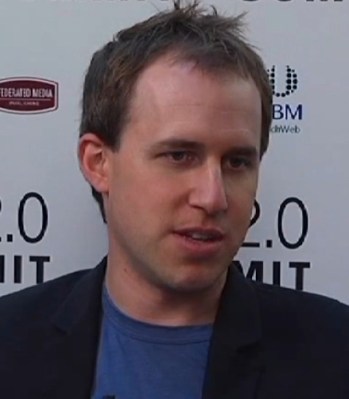We’re here live with Facebook’s CTO Bret Taylor at Mobile World Congress in Barcelona. First as a keynote then a one-to-one interview. Facebook has made a very good friend in mobile up to now — Taylor says it took Facebook eight years to reach 145 million people on desktop, but only four to reach 425 million on mobile. Now the big question is how much further will that go?
Today we are getting some glimpses of that: the social network has announced that it will start to integrate with mobile operators to offer direct mobile billing on apps and other services. And it is also forging ahead in trying to get a more standardised playing field for HTML5 content — an area where it has been making efforts for a while now.
The mobile payments news — that Facebook is integrating operator billing into its platform, which will be used for apps and other content that it offers — is potentially a significant move, in that it will make it much easier for Facebook to offer paid content — whether in the form of, say, a video, or as an in-game credit — via mobile devices.
This looks like it may be the fruit of the Bango relationship that was announced earlier this month. It also builds on some mobile payments services that Facebook already offers: it works with Boku and Zong to let users make payments for Facebook Credits using their mobile devices — however these are for Credits that are redeemed on desktop apps. Integrating with carriers directly puts Facebook’s mobile activities even closer to the point of sale.
The first operators signed on for the service are biggies: Telefonica, Orange, T-Mobile, AT&T, Verizon, Vodafone, KDDI and Softbank.
The other two new announcements made today speak to the fragmentation in HTML5 across devices. Taylor says that it is launching a new group, W3C Core Mobile Web Platform Community Group, to author and evangelize HMTL5 mobile web standards: this will be “the forum to channel the voice of our developers.” It is also launching a group to test standards, ringmark. The idea is for all phones to support the same HTML5 implementations.
Taylor and Facebook (unsurprisingly) have big love for mobile: “Mobile is awe inspiring. The most exciting part of this trend at Facebook is just how much better the experience is on mobile phones. Facebook and mobile phones were made for each other.”
“We think of mobile as the most natural vision of Facebook. It is what Mark Zuckerberg would have made eight years ago if the technology was available at the time,” he says.
He also says that Facebook’s trajectory on mobile has been “a global phenomenon.” Some proof points: in Nigeria, over 90 percent use it on their mobiles. In India, 30 percent are registering on mobiles.
But there is also a huge issue of device support, something that will only grow in prominence as Facebook gets more sophisticated about what it offers to users via mobile beyond status updates, photos and “like” features, and possibly including things like marketing services and apps and other content. At the moment, Taylor says that some 2,500 different varieties of mobile devices are used to access Facebook: “an incredibly diverse ecosystem not dominated by any one platform.” (Hence the standards groups.)
He also gave an update on how Open Graph has progressed on mobile. He says this is already having a massive impact: some 60 million people are being driven to mobile apps already every month through Facebook, via links through Open Graph.
Spotify is the key example he uses here, where people share songs via Open Graph. Facebook is the number-one traffic referrer to Spotify, driving seven million downloads in the first month alone. And more of those are willing to pay for the service.
Now he’s moving on to Pinterest. It reached 10 million users faster than any other site on the Internet “thanks to its Facebook integration.”
Although smartphone apps have proven to be a hugely successful way of growing Facebook’s user base, Taylor says that the mobile web is actually is Facebook’s biggest interface at the moment — it’s twice as big as either Android or iOS. He also says that the mobile web is actually bigger than any other platform.
I’m meeting with Taylor in just a little bit for a longer conversation on everything mentioned above, and hopefully more.
Ongoing story. Refresh for more updates.
